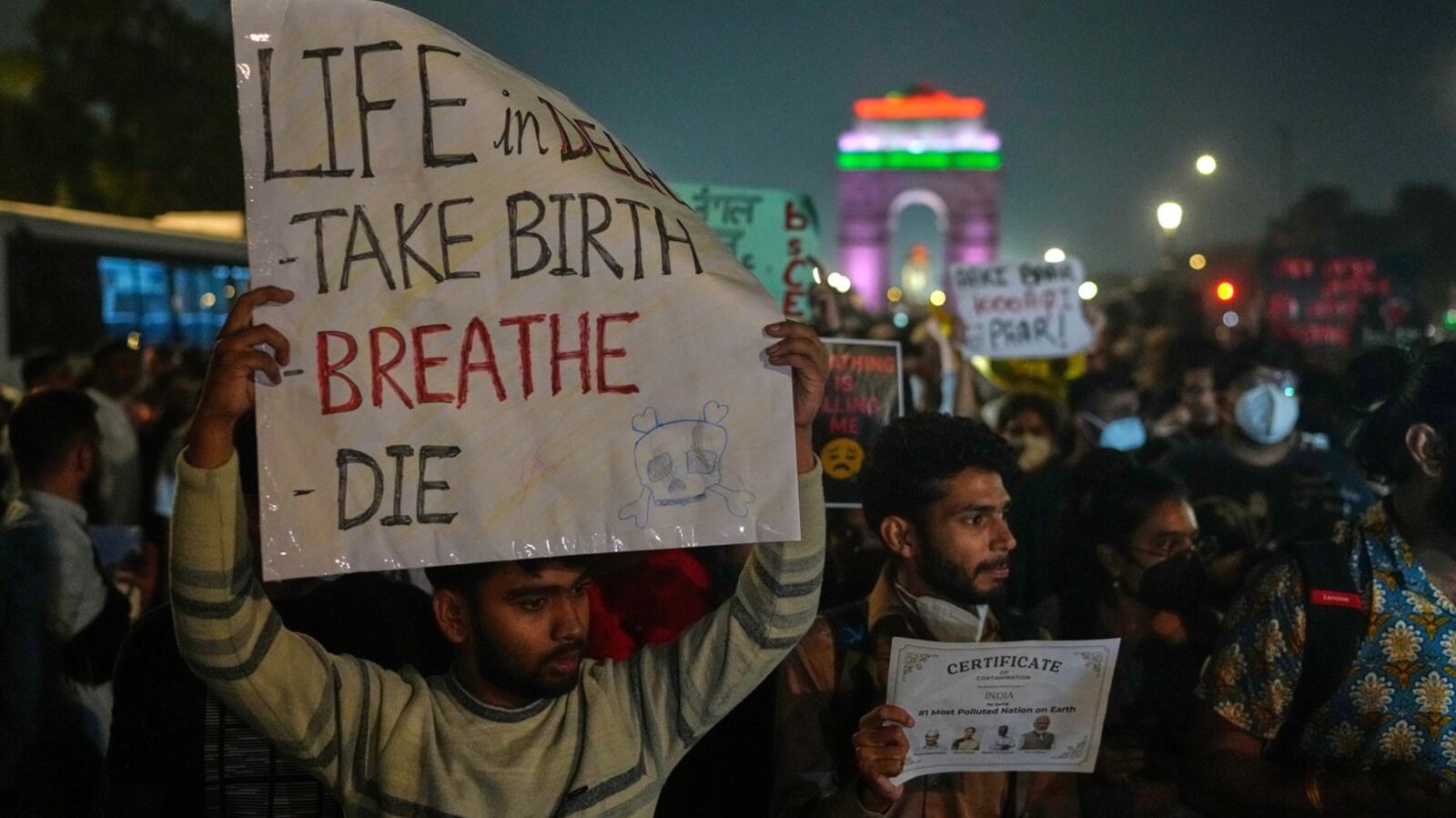New Delhi, India — A thick layer of toxic smog has once again blanketed India’s capital, pushing air pollution levels to “severe” and hazardous levels and sparking rare public protests demanding urgent government action.
By Monday morning, New Delhi’s Air Quality Index (AQI) reached 344, a level considered dangerous to human health and nearly 20 times higher than the safe limit recommended by the World Health Organization (WHO). The smog, described by residents as acrid and choking, has worsened what experts call a long-running public health emergency in one of the world’s most polluted urban centers.
Public Outrage and Street Protests
Hundreds of residents, including families, students, and environmental activists, gathered late Sunday evening at India Gate in a rare show of civic unrest over air pollution. Protesters wore face masks and carried banners reading slogans like “I Miss Breathing” and “Stop Playing Politics, Start Cleaning Air.”
“I am here just as a citizen who cares and is worried about the state of our air,” said one demonstrator, Meghna, expressing frustration at what she called “government inaction and political blame games.”
Police later confiscated placards and dispersed the gathering, citing lack of protest permits.
Severe Health and Environmental Impact
The worsening air quality has triggered widespread complaints of respiratory illness, eye irritation, and persistent coughing, particularly among children and the elderly. Hospitals across the city reported a spike in patients with asthma and bronchial conditions.
New Delhi, home to over 30 million residents, routinely tops global pollution rankings. According to IQAir, a Switzerland-based monitoring agency, six of the world’s 10 most polluted cities are in India, with New Delhi consistently ranking as the most polluted capital worldwide.
Each year, pollution levels in the region soar in late autumn and winter, largely due to crop residue burning in nearby states such as Punjab and Haryana. The smoke combines with emissions from vehicles, factories, and construction, while stagnant, cold air traps pollutants close to the ground.
Government Measures and Criticism
Authorities have announced temporary bans on construction activities and diesel generators, while advising schools to suspend outdoor activities. Officials have also considered emergency measures such as cloud seeding to induce artificial rainfall.
However, environmental groups and residents say such measures are short-term fixes that fail to address the root causes of pollution.
“Every year, we face the same toxic air, and every year, the government offers the same quick solutions,” said activist Rishi Lekhi. “We need stronger emission controls, clean energy investments, and strict enforcement of pollution laws — not just bans for a few days.”
A Call for Long-Term Reform
Experts warn that unless India strengthens its air pollution control framework, including industrial emission limits, public transport reforms, and agricultural waste management, the country will continue to suffer from recurring winter smog crises.
The 2025 episode has once again highlighted the urgent need for coordinated national and regional action to protect public health and restore breathable air to one of the world’s most densely populated regions.

